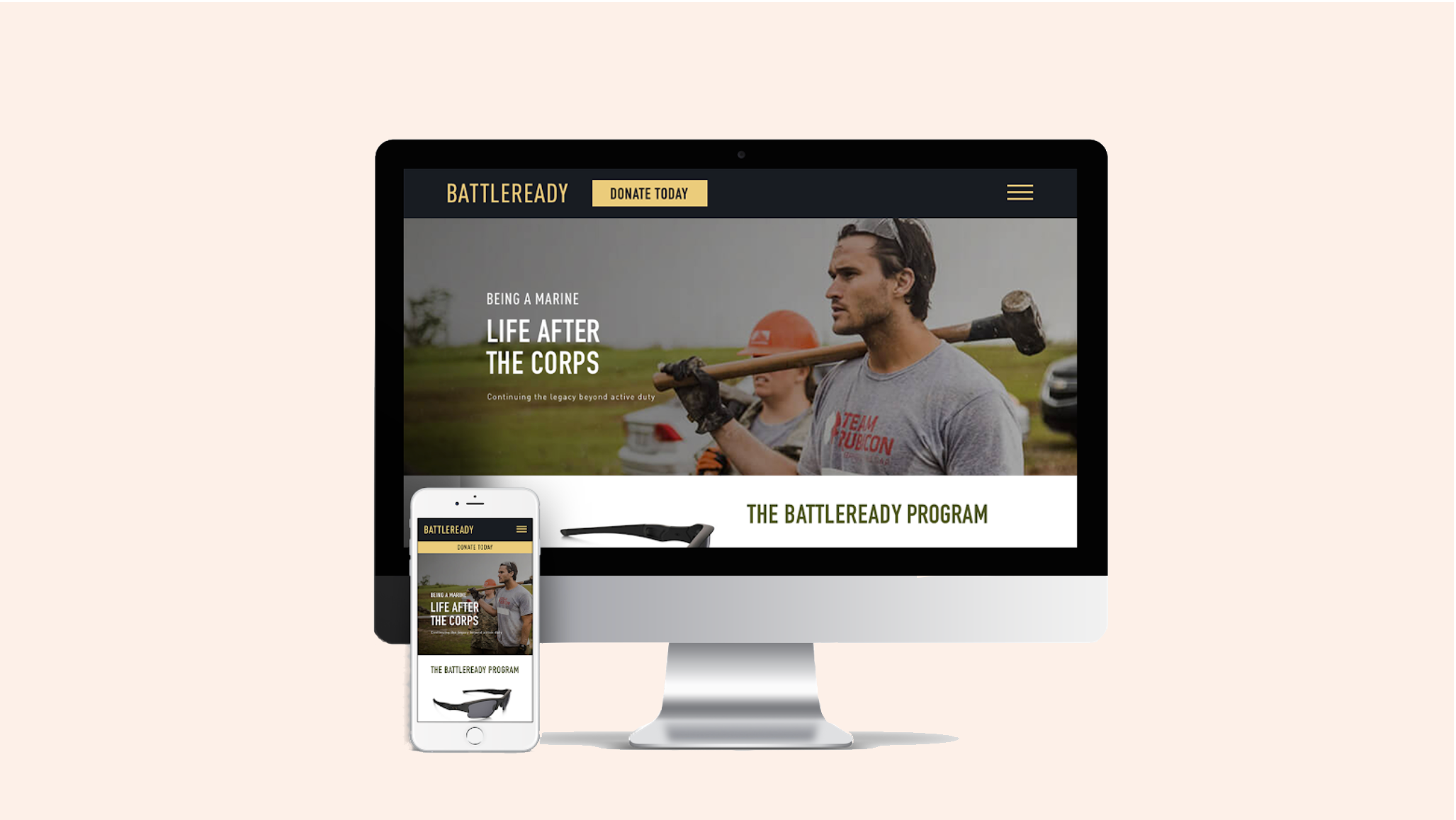Battle Ready: Design for Social Innovation
Battle Ready is a web and mobile social enterprise platform that incentivizes active duty military to pursue, access, and receive mental health services available to them through their military health care providers.
Role: Research, Content Strategy, UX
Challenge:
There are already many apps and websites dedicated to providing information on PTSD and support, yet every year thousands of soldiers and veterans go without treatment because of the stigma associated with mental health resources.
Our student group worked to design a solution that could be used by a nonprofit or social enterprise to help active duty military become more comfortable with accessing PTSD and other mental health resources prior to deployment.
Solution:
The BattleReady Program is a web and mobile platform that incentivizes active duty military to pursue, access, and receive mental health services available to them through their military health care providers.
Active military who visit the Battle Ready site can:
- Learn about treatment providers in their area
- Schedule a mental health check-in appointment prior to deployment
- Earn incentives for seeking care. Every soldier who makes an appointment prior to deployment receives a complimentary pair of Oakley Military Standard Issue Flak Jacket sunglasses, which retail at $120.
Process
Discovery Phase
During a four-week module on design for social innovation, our student group was presented with the following challenge: "A regional NGO has engaged your agency to develop a digital solution that sustainably solves a social challenge in a specific community."
Once our team decided to address PTSD, we began with generative research. This consisted of interviews with veterans, active-enlisted military and their family members, and a review of existing literature on PTSD. Although there is already an extensive amount of information and resources available to help soldiers and veterans suffering from PTSD, we found that many people do not seek out the resources they need.
Our early conversations with veterans, military, and their loved ones helped us define our problem: The barrier to care was not a lack of information, it was stigma and a lack of familiarity with the process of seeking mental health resources.
After defining the problem, we mapped out the journey military personnel currently take when learning about PTSD, and created a persona (not pictured) to help guide our design.
Descriptive and Explanatory Research
Once we had defined who and what we were designing for, we made sure we understood the context of the problem by reviewing the resources on PTSD currently available to active duty military, veterans, and the public.
Our research included a thorough analysis of government resources available online and further interviews with active duty military and their friends and family. After looking at all the available government resources and apps, we begin mapping out all the content currently available.
Key Insights
- Though there are already many resources and apps available to help with PTSD treatment, stigma and lack of awareness prevent people from seeking treatment
- Despite the stigma associated with seeking mental health treatment, PTSD is a major cause of concern for soldiers and their loved ones
- An opportunity existed to combat stigma by incentivizing enlisted soldiers to talk about PTSD and mental health resources before their first deployments
Journey Mapping
A journey map based on interviews with a member of the Individual Ready Reserves.
Initial Whiteboarding for Platform
After looking at all the available government resources and apps, we created a content map to guide the information architecture of Battle Ready.
Initial Sketches
In the first round of sketching, we focused on the landing page and the information architecture of Battle Ready's main components: PTSD education, provider search, and self-care tips.








